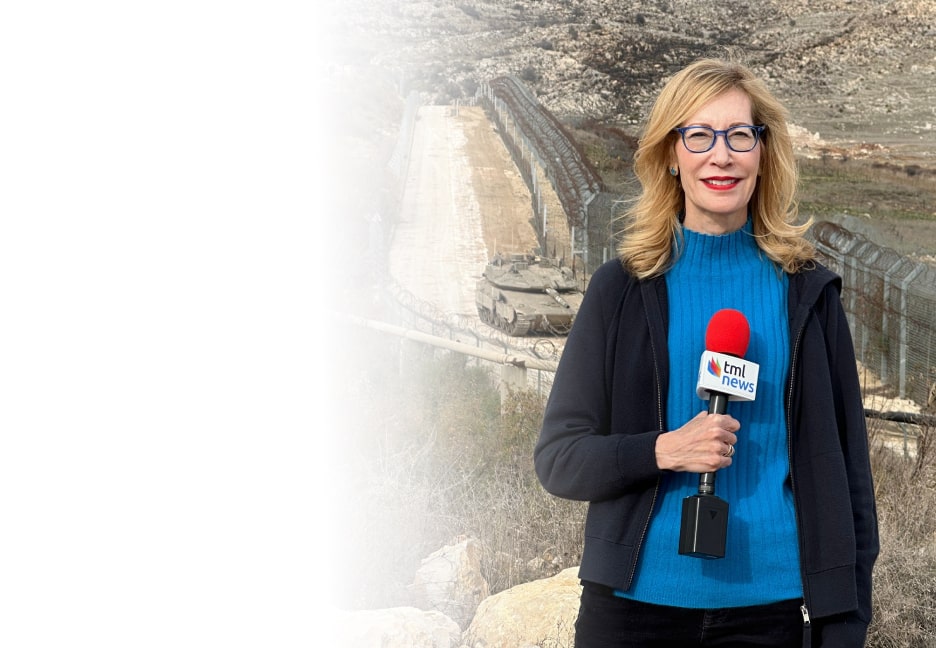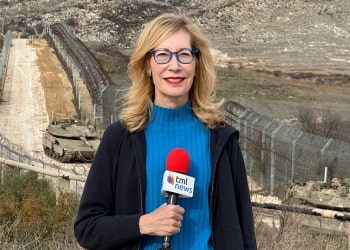“The greatest treasure hunt in the world”
With palpable excitement, Israeli archaeologists in Jerusalem announced that they have restored colorfully-decorated floor tiles in geometric shapes that they believe were on the floor of the Second Temple in Jerusalem that was destroyed in 70 CE. Jews call the site the Temple Mount, while Muslims call it the Noble Sanctuary.
“It is very touching for me to realize that these are the actual floors upon which our forefathers walked and sacrificed as they were active on the Temple Mount 2000 years ago,” Gabriel Barkay, an archaeologist who has excavated in Jerusalem for over 50 years, told The Media Line. “I feel a close attachment with the people who walked on the same soil and cherished the atmosphere and spiritual virtues of this city.”
The floor tiles were in complex geometric patterns of squares turned inside other squares in colors including black and rose. The materials were marble and alabaster and similar to other floors in palaces from King Herod built at the same time. Herod was a Roman king who ruled the area in the first century BCE and expanded the site of the second Temple.
“We didn’t expect something like this,” Frankie Snyder, an expert in the study of ancient Herodian style flooring told The Media Line. “These are the tiles that the pilgrims who came to Jerusalem for the festivals walked on. These are tiles that Jesus walked on. I love that I get to hold this piece of history in my hand.”
Snyder reconstructed the designs of the floors using mathematical models. The type of flooring, called Opus sectile, which means “cut work” in Latin, is very expensive and was considered to be far more prestigious than mosaic tiled floors, she said.
This holiday season, give to:
Truth and understanding
The Media Line's intrepid correspondents are in Israel, Gaza, Lebanon, Syria and Pakistan providing first-person reporting.
They all said they cover it.
We see it.
We report with just one agenda: the truth.


She said that about 600 colored stone floor tile segments have so far been uncovered, with more than 100 definitively dated to the Herodian Second Temple period. The style of flooring is the same as those found in other of Herod’s palaces in Masada, Herodian and Jericho. Snyder says the tile segments were perfectly inlaid next to each other.
The tiles are part of the Temple Mount sifting project, an Israeli archaeological project begun in 2005. It began after the Muslim Waqf, which controls the site that is holy to both Jews and Muslims, removed 400 truckloads of soil when they expanded a mosque on the site known as the el-Marwani mosque.
Israeli archaeologists were furious, afraid they had lost their chance to find many of the valuable Jewish artifacts at the site.
“I was a student of archaeology at the time, and I ran over to the dump with a few friends and started surveying it,” Zachi Devira, the co-director of the Temple Mount Sifting Project told The Media Line. “We realized that it was valuable, and we began to date the finds.”
Devira originally thought the project would last just a few months. But, he said, as they advanced they realized the finds were significant, and it was a chance to teach archaeology. They established the Temple Mount Sifting Project, in which volunteers come and sift through buckets of dirt, in a method similar to panning for gold.
“So far, 200,000 people have participated in this project which is unprecedented in archaeology research,” Devira said. “We also realized that it can teach us more than what we expected.”
He said they have a half-million objects that need further investigation and they are currently building a lab to do so.
Palestinians have criticized the Temple Mount Sifting Project, which is located on the slopes of Mount Scopus, next to the Mount of Olives, as part of an Israeli effort to deny Palestinian claims to east Jerusalem, which they say must be the capital of a Palestinian site. It is located next to the Arab neighborhood of A-Tur.
Devira says the goal of the project is not political, but he understands the sensitivities.
“Everything you do in Jerusalem is political,” he said. “We are trying to avoid politics. We study all periods. We do not need to prove the existence of the Temple. We are only trying to shed new light on what we already know.”
Volunteer Beverly Ungar is carefully sifting through a bucket of debris that she has poured out onto a wire mesh table. A retired public health nurse, she has come here once a month for the past three years.
“What they (the Waqf) did on the Temple Mount was a crime against our religion,” she told The Media Line. “But the work here gives you a sense of what happened on the Temple Mount and who was there. It’s the best treasure hunt in the world.”